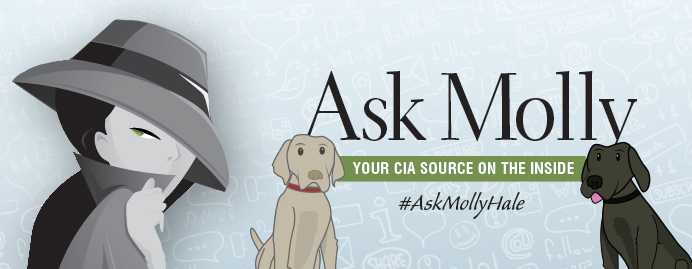
Dear Molly,
Why are all the dogs in CIA’s “bomb dog” program Labrador retrievers? Do you ever have any other breeds of dogs?
~ Red Rover
* * * * *
Dear Red Rover,
That’s a great question!
Like many explosive detection programs, we use Labrador retrievers because of their non-stop energy, friendly demeanor, and love of food. Labs are known for their intelligence and—most importantly—their great sense of smell. All essential qualities for a CIA Explosive Detection K9!
Years ago, the Agency had several Belgian Malinois (also known as Belgian shepherds) on the team. Although they are great at explosive detection, they also have highly developed protection instincts that make them perfect choices for many police departments.
However, our dogs rarely serve in any kind of protective detail and instead sometimes have an almost ambassador-like role because of their frequent interactions with people—including Agency officers, regional law enforcement, overseas staff, and the public. Therefore, we found it made more sense to have dogs who enjoy interacting with people and aren’t intimidating to the general public.
And what’s more charming than a wiggling, wagging Labrador retriever? After all, there’s a reason they were voted America’s most popular dog breed for over 30 years (according to the American Kennel Club).

CIA K9 Indigo showing off her silly side during training.
At CIA, we’ve had every variety and color of Labrador retriever in our program: chocolate, black, red, brown, yellow, and even a few golden labs, which we suspect might be mixed with Golden retriever. We have both the lighter-boned, smaller “American” Labradors, as well as the more muscular and broader-headed “English” Labradors. Interestingly, all Labrador retrievers are descended from the same lineage of dog—the St. John’s water dog—that dates to at least the 1830s. These dogs were first found in the northeastern Canadian province of Newfoundland—not nearby Labrador, as I had assumed.
Most of our Labradors come from either a service dog or prison dog training program. Our CIA dog trainers pick out the new puppy recruits when they are between one and three years old. Once they arrive at CIA, they go through an intensive 16-week long “Puppy Class” where they learn the ins-and-outs of becoming CIA Bomb Dogs.
It might sound crazy, but in less than six weeks, our pups learn to recognize a few dozen individual explosives, and with that knowledge, they can detect more than 20,000 different explosive mixtures! That’s because a dog's nose is 10,000 times more powerful than yours or mine. Imagine two million barrels of fresh apples: A dog could find a single rotten apple hidden among them.
How is it possible for a dog to learn only a few dozen scents, yet be able to detect so many different explosive mixtures?
Here’s an example our trainers like to use: Let’s say you and your dog walk into your grandparents’ house and smell beef stew cooking on the stove. You might be able to pick out a few ingredients, but generally you smell the delicious stew as a whole. When your dog sniffs the pot of beef stew, however, he or she smells the carrots, salt, beef, celery, onions, paprika, and anything else in it. The dog can pick out each ingredient and can tell the difference between them all. Yet to you and me, it just smells like stew.
If, for example, your dog was taught to pick out the scent of carrots and tell you whenever carrots where nearby, he or she would then alert you when your grandma showed up at your house with a batch of stew. Your dog could smell the carrots separate from the rest of the ingredients that make up the stew.
Pretty incredible, right?!
Now if only I could train my dog to sniff out chocolate cake, and retrieve it, we’d really be on to something.
~ Molly
#AskMollyHale
